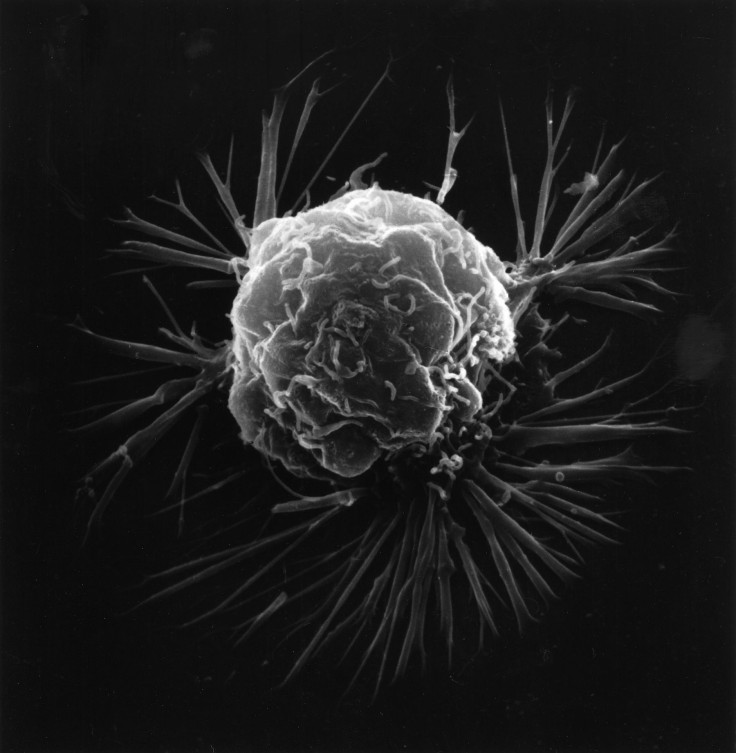Introducing The iKnife: A 'Smart Tech' Scalpel For Doctors That 'Sniffs' For Cancer

The 'smart tech' revolution is here and changing every aspect of our lives. 'Smart' light bulbs can now let us control the mood and color of a room with an iPad. Smart TVs will soon let you instantly bounce from surfing the web, listening to music, and watching your favorite TV shows, all from the comfort of your sofa.
So why not use some of this intelligent technology in a setting where it matters most?: a hospital operating room.
The iKnife is a new 'smart scalpel' developed by scientists in Europe that could one day help doctors with cancer surgeries. In the UK, "1.8 million diagnostic, curative, or palliative surgical procedures are performed each year," according to the report in Science Translational Medicine that announced the iKnife.
The surgical removal of solid tumors is a tricky, balancing act. Physicians must remove all of the cancer cells in the disease area, without harming the surrounding healthy tissue. If they leave some of the tumor behind, then the cancer could return, but cutting away too much of the healthy tissue can cause pain or inflammation.
Prior work suggests that overlooked cancer cells are a tremendous problem for patients and health care systems — as second, or sometime third, operations are needed to remove a tumor.
"20% of breast cancer patients treated with breast conserving surgery (that is, lumpectomy) require further surgery to clear positive margins," cited the authors, who were led by biologist Dr. Júlia Balog of MediMass Ltd., a chemical imaging company.
A Checkup For Your Checkup
There are ways for doctors to double-check their work during the operation, but they take time. Patients can be left under general anesthesia, while other technicians rush to check biopsied specimens under a microscope. However, this can take between 20 to 30 minutes, is expensive given the extra anesthesia, and is still prone to error.
The iKnife is a brilliant invention because it makes real-time recordings on whether the tissue being removed at the time is normal or cancerous.
This is how it works. Everytime that a surgeon makes a cut, a bit of 'smoke' or spray from the excised tissue enters the air. The iKnife sucks up this smoke and transports via tube to special machine called a "rapid evaporative ionization mass spectrometer," or REIMS. This machine compares the content of the smoke against a database of biological samples for known types of cells, both healthy and cancerous.
After making sure the iKnife could tell the difference between cancer and normals cells grown in separate petri dishes, the researchers tried it in a real operating room on 91 patients with cancer.
The iKnife was 97 percent accurate when assessing the difference between tumor cells and healthy tissue. With a turnaround time of three seconds, iKnife was fast, but it was also precise, requiring a tissue sample smaller than one-tenth the size of a grain of salt to make a reading.
It could take a few years before the iKnife becomes a mainstay in doctors' offices. First, hospitals will need to build a database of known tissue samples — this study used over 3,000 specimens — which requires time. Plus, as with most cutting-edge innovations, the iKnife is expensive.
But as the authors concluded: "The initial cost of instrumentation is expected to decrease as the technology becomes more widespread. If fully implemented into the surgical environment, this technology has potential to reduce the rate of local tumor recurrence and the cost of histopathology services and to improve the overall survival of patients."
Source: Balog J, Sasi-Szabó L, Kinross, et al. Intraoperative Tissue Identification Using Rapid Evaporative Ionization Mass Spectrometry. Science Translational Medicine. 2013.



























